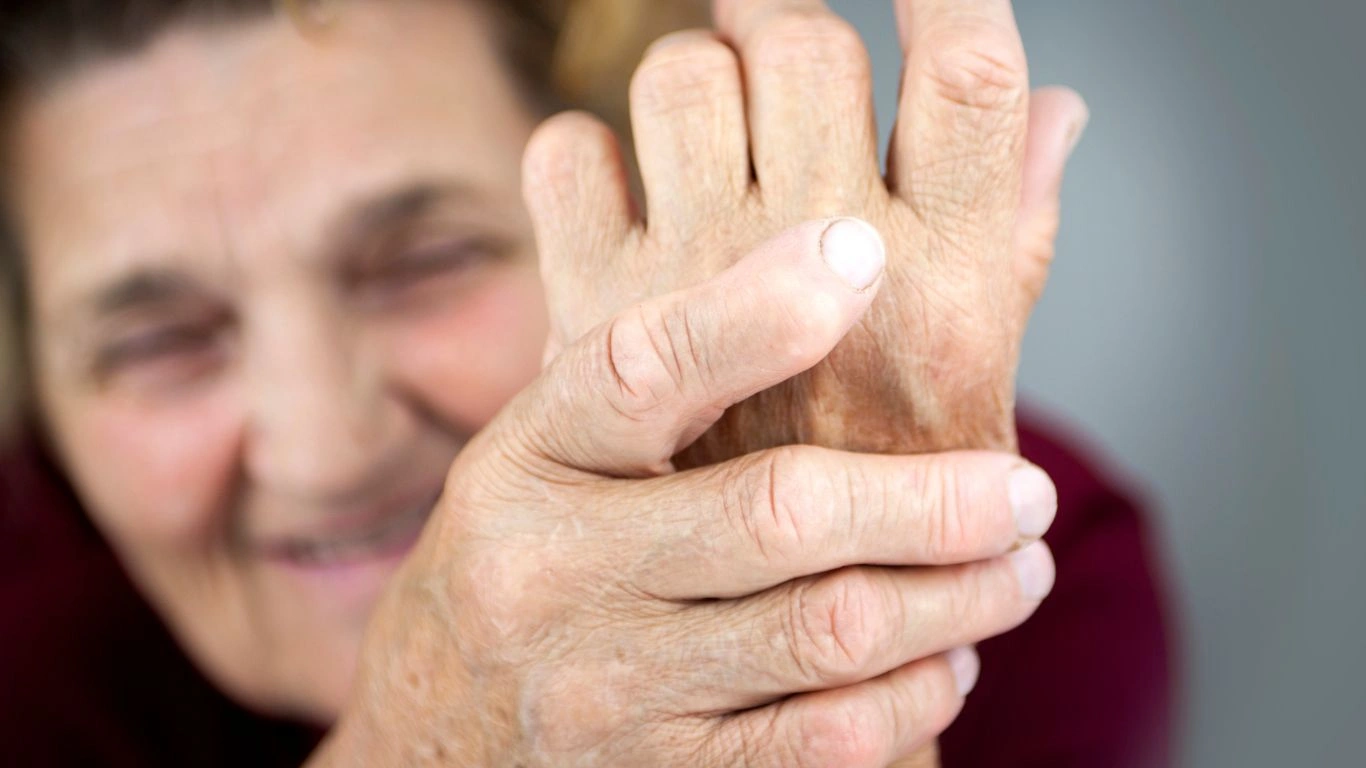Ultimate Guide: How to Manage Rheumatoid Arthritis While Traveling Comfortably
Traveling can be an exciting adventure, but if you’re living with rheumatoid arthritis (RA), it often comes with a unique set of challenges. From managing pain and stiffness to sticking with medication routines and finding ways to stay comfortable on the go, it’s not always easy. As a Rheumatology nurse practitioner who’s worked closely with countless patients navigating RA, I’ve seen firsthand how thoughtful planning and a few practical tips can make all the difference. So, if you’ve ever wondered how to manage rheumatoid arthritis while traveling, you’re in the right place. Let’s dive into some smart, down-to-earth strategies that can help you keep your symptoms in check and enjoy your trip without unnecessary stress.
Understanding the Challenges of Traveling with Rheumatoid Arthritis

Travel can be unpredictable, and that unpredictability can make managing RA symptoms tricky. Joint pain and swelling might flare up due to changes in weather, irregular sleep, or just the strain of being on the move. Long periods of sitting, like on planes or in cars, can cause stiffness, and unfamiliar environments might make it harder to stick to your usual self-care routines.
From my experience working with RA patients, one thing is clear: preparation is your best friend. Before you even book your ticket, thinking through your individual needs can save you a lot of discomfort later. Consider what triggers your flares, how your medication schedule fits into travel times, and what kinds of support you might need while away from home.
Common Travel Triggers for RA Symptoms
- Changes in climate or humidity: Some patients find that colder or damp weather can worsen stiffness.
- Disrupted sleep patterns: Jet lag or uncomfortable sleeping arrangements can increase fatigue and pain.
- Physical strain: Carrying heavy luggage or walking long distances can put extra pressure on inflamed joints.
- Stress: The hustle and bustle of travel itself can sometimes trigger symptom flare-ups.
Recognizing these triggers early helps you plan ahead and take proactive steps. For example, wearing supportive shoes, packing lightweight luggage, or scheduling rest periods can all help minimize stress on your joints.
How to Manage Rheumatoid Arthritis While Traveling: Medication and Medical Prep

One of the biggest concerns for anyone with RA is keeping their medication regimen on track, especially when crossing time zones or dealing with busy schedules. Here’s what I usually advise my patients:
Plan Your Medication Schedule Ahead of Time
- Consult your rheumatologist before you travel: They can confirm your medication dosages and timing, and advise if any adjustments are necessary due to travel.
- Carry enough medication: Bring extra supplies in case of delays or lost luggage — ideally, pack medications in your carry-on for easy access.
- Use a pill organizer: It helps keep track of doses, especially when crossing time zones that may confuse your usual routine.
Prepare for Medical Emergencies
- Bring a letter from your doctor: This should outline your diagnosis, medication list, and any special needs. It can be helpful at airport security or in case you need medical care abroad.
- Know where to find local healthcare: Research nearby clinics or hospitals at your destination, just in case.
- Keep emergency contacts handy: Include your rheumatologist’s number and any family members or friends who should be informed if needed.
In my clinical practice, I often remind patients that having a little medical backup plan can ease anxiety and keep their focus on enjoying the trip rather than worrying about what might go wrong.
Tips for Staying Comfortable and Active During Your Travels

Once your medications and medical prep are sorted, the next big piece of the puzzle is comfort and mobility. Managing rheumatoid arthritis while traveling isn’t just about avoiding flares; it’s also about feeling good enough to enjoy your destination. From my years of experience, patients who actively plan ways to reduce stiffness and protect their joints during travel have much better outcomes—and a lot more fun, too.
Move Often and Mindfully
One thing I always stress is the importance of moving your joints regularly. Whether you’re on a plane, train, or car, sitting still for hours can tighten up those joints and make pain worse. Simple stretches or even short walks when you can get up make a huge difference.
- On flights: Stand up every hour or so, walk down the aisle if possible, and stretch your legs and arms gently.
- In cars: Try to stop every couple of hours to get out and move around, even if it’s just a quick stretch on the side of the road.
- At hotels or accommodations: Use downtime to do light stretches or yoga to keep your joints limber.
From chatting with patients who travel frequently, I know this can sometimes feel like a hassle, but trust me, those little breaks can prevent a lot of pain later.
Pack Smart: Supportive Gear Can Be a Game Changer
Another practical tip I always share is to pack smart accessories that support your joints and help reduce strain.
- Compression gloves or sleeves: These can ease swelling and provide gentle support, especially if you notice your hands or wrists getting stiff during travel.
- Ergonomic travel pillows and cushions: Neck or lumbar support helps keep your spine and joints aligned, reducing the risk of stiffness.
- Comfortable, supportive shoes: This one cannot be overstated. Walking on uneven surfaces or long distances can be brutal on inflamed joints. Shoes with good arch support and cushioning are worth their weight in gold.
- Lightweight mobility aids: If you typically use canes or braces, consider travel-sized versions or collapsible aids that are easier to carry around.
In my clinic, I often recommend patients bring these items even for short trips, because once pain hits, it’s much harder to manage without proper support.
Nutrition and Hydration: Fuel Your Body for Travel

Food and drink might not be the first thing you think about when managing RA on the road, but they play a bigger role than most people realize. Staying well-hydrated and eating nutrient-rich foods can help keep inflammation down and boost your overall energy levels—two things that make a huge difference when you’re away from home.
Keep Hydrated
Dehydration can worsen joint pain and fatigue, so it’s super important to drink plenty of water throughout your travels. Carry a refillable water bottle and try to sip regularly, especially if you’re flying or spending time in dry climates.
Choose Anti-Inflammatory Foods When Possible
While it’s tempting to indulge in all the local treats (and hey, that’s part of the fun!), try to balance it out by including foods known for their anti-inflammatory properties. These include:
- Fatty fish like salmon or mackerel
- Fresh fruits and veggies, especially berries and leafy greens
- Nuts and seeds
- Whole grains
- Healthy fats such as olive oil
In my years of counseling patients, even small dietary tweaks during travel can help mitigate RA symptoms. And if you know you’ll be eating out a lot, packing some healthy snacks like nuts or dried fruit can be a great backup.
Managing Stress and Fatigue: The Invisible Challenges

Travel isn’t just physically demanding—it can be emotionally and mentally taxing, too. Stress and fatigue are well-known triggers for rheumatoid arthritis flares, so keeping your mind calm and your energy steady is just as important as the physical strategies we’ve talked about.
Practice Relaxation Techniques
Simple breathing exercises, meditation apps, or even just taking quiet moments for yourself can help keep stress in check. I’ve recommended these to many patients who travel, and they often report feeling more in control and less overwhelmed.
Listen to Your Body
Perhaps the most important advice I can share is to honor your limits. It’s okay to say no to packed itineraries or skip that extra walking tour if your body is telling you it needs rest. Remember, travel is about enjoying yourself, not pushing through pain. Taking breaks and pacing yourself will pay off in the long run.

Air travel can be one of the most challenging parts of a trip when you have rheumatoid arthritis. From security lines to cramped airplane seats, it’s easy for joints to become aggravated. Over the years, I’ve helped many patients prepare for flights, and here are some insights that might make your journey smoother and less painful.
Request Assistance Ahead of Time
If you’re worried about walking long distances or standing in queues, don’t hesitate to request special assistance. Airlines and airports usually provide wheelchair services or golf cart rides to help passengers get to their gates comfortably. Booking this service in advance can save you a lot of energy and stress on travel day.
Pack Smart for Security Checks
Having RA means you might be carrying medications, injections, or medical devices that require extra attention at security checkpoints. To avoid hassles:
- Keep medications in original packaging: This makes it easier to explain and verify what you’re carrying.
- Carry your doctor’s letter or prescription: It can be a lifesaver if questions arise about your medications or medical supplies.
- Separate liquids and gels: Follow TSA or relevant airport guidelines to keep your security screening smooth.
Choose Your Seat Wisely
Seat selection matters. I usually tell patients to try and book an aisle seat so you can easily get up and move around without disturbing neighbors. If you’re on a long flight, consider seats with extra legroom or near the front where boarding and deboarding are quicker and less hectic.
Bringing a small lumbar support pillow or travel cushion can also help maintain better posture and reduce joint strain during the flight.
Adapting Your Itinerary to Suit Your Needs

One lesson I’ve learned over time—both personally and professionally—is that flexibility is key when traveling with rheumatoid arthritis. Having a packed schedule might sound exciting, but it can also wear you down faster than you expect. Here are some ways to keep your itinerary RA-friendly:
Build in Rest Days and Downtime
Try to avoid planning back-to-back busy days. Instead, sprinkle in lighter days where you can relax, recover, and do gentle activities. This can be as simple as lounging in a café, enjoying a calm museum visit, or taking a slow stroll in a park.
Prioritize What Matters Most
Before your trip, make a list of must-see places or must-do activities, and be willing to adjust based on how your body feels each day. Sometimes missing a planned tour means you get to discover hidden gems or enjoy a special moment you wouldn’t have otherwise.
Use Local Transport Smartly
Consider how you’ll get around once you arrive. Walking long distances might be unrealistic on some days, so look into options like taxis, ride-sharing apps, or local buses to save your joints. Even renting a mobility scooter in some destinations can be an option to consider.
Staying Connected with Your Healthcare Team
Even when you’re away from home, keeping in touch with your rheumatology team can be incredibly reassuring. Technology makes this easier than ever.
Telehealth and Virtual Check-ins
Many clinics now offer telehealth appointments, which means you can have a quick check-in or discuss any flare-ups without needing to be physically present. Before you leave, ask your provider about how to reach them remotely in case you need advice or adjustments to your treatment.
Keep a Symptom Diary
Documenting your symptoms, activities, and any triggers while traveling can help your healthcare team understand how your RA is behaving and guide future treatment plans. I encourage patients to jot down notes or use apps designed for chronic illness tracking.
Final Thoughts on Managing RA While Traveling
Traveling with rheumatoid arthritis doesn’t have to be overwhelming. With a little planning, a focus on comfort, and an open line with your healthcare providers, you can still enjoy new experiences and adventures. Remember, you know your body best, and listening to what it needs is the best travel advice I can give.
References
Disclaimer
This article is intended for informational purposes only and does not replace professional medical advice, diagnosis, or treatment. Always consult your healthcare provider for guidance tailored to your individual health needs.

Tarra Nugroho is a dedicated Nurse Practitioner with a strong foundation in family and preventive care. She brings both compassion and clinical expertise to her practice, focusing on patient-centered care and health education. As a contributor to Healthusias.com, Tarra translates medical knowledge into clear, empowering articles on topics like women’s health, chronic disease management, and lifestyle medicine. Her mission is simple: help people feel seen, heard, and informed—both in the clinic and through the content she creates. When she’s not caring for patients, Tarra enjoys weekend hikes, plant-based cooking, and curling up with a good health podcast.






